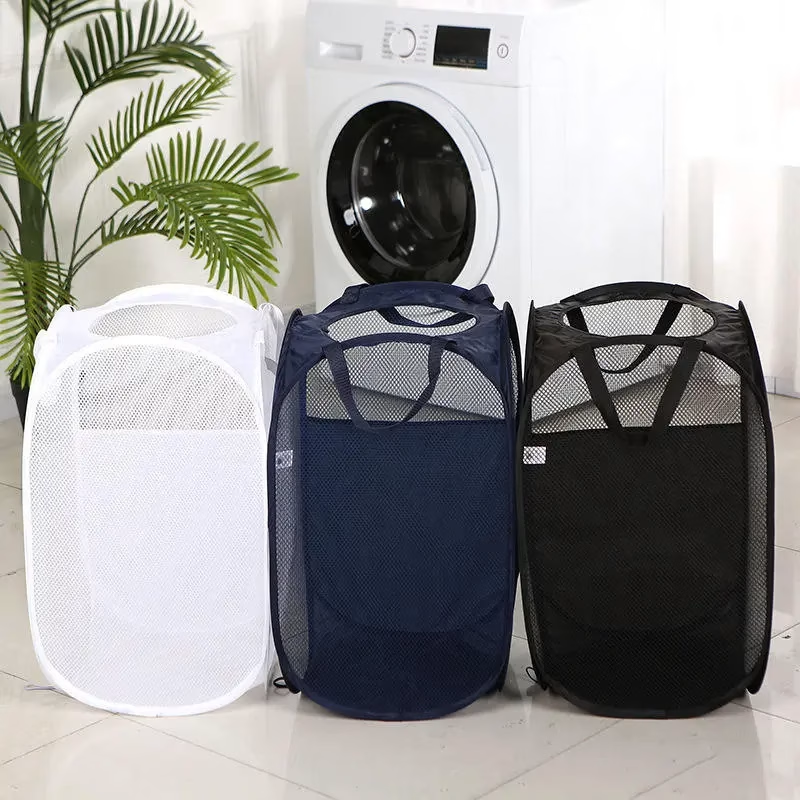Have you ever pulled a favorite garment from the washing machine, only to find it snagged, stretched, or tangled? It’s a frustrating moment that can shorten the life of your valuable textiles. This common problem has a simple and effective solution: the mesh laundry bag.
This guide explains how to use these essential tools to protect fabrics, streamline sorting, and improve your overall laundry operations. By integrating a quality laundry mesh bag system, you can preserve the integrity of everything from delicate uniforms to industrial textiles, ensuring they remain in top condition wash after wash.
What Exactly Is a Garment Wash Bag?
A garment wash bag is a simple, zippered or drawstring pouch made from a porous mesh material. It acts as a protective barrier inside the washing machine. While inside the bag, items are shielded from the aggressive tumbling action of the wash cycle.
The mesh construction is key. It allows water and detergent to flow freely through the bag, ensuring the contents get thoroughly cleaned. At the same time, it prevents direct, harsh contact with the washer drum and other, heavier garments in the load. This simple separation is what stops snags, prevents tangling, and protects delicate details like buttons, zippers, and embroidery from damage.
How a Mesh Laundry Bag Elevates Your Laundry Process
Using a mesh laundry bag is more than just a protective measure; it’s a strategic step toward better textile management. The benefits extend from preserving individual items to improving the efficiency of your entire laundry system. For any operation that handles significant volumes of clothing or specialized apparel, these bags are a game-changer.
Unmatched Protection for Delicate and Specialized Items
The primary benefit is fabric protection. Certain materials don’t stand up well to the mechanical stress of a modern washing machine.
Delicate Fabrics: Materials like silk, lace, and fine knits can easily get caught on other items or the machine’s interior, leading to pulls and tears. A bag creates a safe cocoon.
Items with Embellishments: Garments with beading, sequins, or intricate embroidery are vulnerable. The bag prevents these details from catching, breaking, or falling off.
Hardware and Closures: Zippers, hooks, and buckles on some garments can snag other items in the wash, causing widespread damage. Containing these items protects the entire load. Bras, for example, have hooks that are notorious for tangling with other clothes.
Streamlined Sorting and Organization
In a commercial or large-scale laundry setting, organization is critical. Mesh bags offer a simple and effective way to keep items sorted throughout the washing and drying process.
Preventing Lost Items: Small articles like socks, hosiery, and gloves often go missing. Washing them inside a bag ensures they stay together from start to finish.
Simplified Uniform Management: Assigning bags to different individuals or departments makes sorting after the wash cycle nearly effortless. This is ideal for athletic teams, hospitality services, and healthcare facilities.
Color Separation: While you should still separate loads by color, using bags within a mixed-delicates load can provide an extra layer of protection against minor color bleeding.
A Step-by-Step Guide: How to Use a Mesh Laundry Bag Correctly
To get the most out of your washing machine bag for delicates, follow a few simple best practices. Proper use ensures both maximum protection for your garments and optimal cleaning results.
Step 1: Sort Your Garments Thoughtfully
Begin by sorting your laundry as you normally would, separating by color and fabric type. Identify the items that require extra protection. This includes delicates, items with hardware, small pieces prone to getting lost, and performance wear. Group similar items that will be washed in a bag. For instance, wash delicate blouses together, and keep socks in a separate bag.
Step 2: Fill the Bag—But Don’t Overfill
Place the sorted items into the mesh laundry bag. The most important rule is to avoid overstuffing it. Garments need room to move around inside the bag for water and detergent to circulate effectively. A good rule of thumb is to fill the bag no more than three-quarters full. This ensures each item gets properly agitated and cleaned. Once filled, securely close the zipper or drawstring. Many high-quality bags include an elastic cover to tuck the zipper pull into, preventing it from snagging other items.
Step 3: Choose the Right Washing Cycle
Place the filled bag into the washing machine along with the rest of your load. Select a wash cycle appropriate for the most delicate item inside the bag. In most cases, this will be the “Delicate” or “Hand Wash” cycle, which major appliance manufacturers explain uses a slow spin and gentle agitation to protect fabrics.
Use cold water to further protect fabrics from shrinking or fading. This choice also has significant environmental benefits by reducing energy consumption, a practice recommended by environmental agencies..
Step 4: Drying Your Protected Items
After the wash cycle finishes, you can handle the items from the bag according to their care labels. For many delicates, it’s best to remove them from the bag and air-dry them on a rack or hanger. This prevents any potential heat damage from a machine dryer. However, for more durable items like socks or items made of synthetic blends, you can often leave them in the bag and place the entire bag in the dryer on a low-heat setting.

Choosing the Right Mesh Laundry Bag for Your Needs
Not all mesh bags are created equal. The type of mesh, the size of the bag, and its construction all play a role in its performance. Selecting the right one depends on what you plan to wash.
| Feature | Fine Mesh Bags | Coarse Mesh Bags | Structured/Padded Bags |
| Description | Tightly woven mesh with very small holes. | Loosely woven mesh with larger, honeycomb-style holes. | Often cylindrical with a firm top and bottom ring. |
| Best For | Extremely delicate fabrics like silk, lace, and hosiery. Prevents even the smallest hooks from snagging. | General-purpose use for items like sweaters, activewear, and everyday garments that need protection from tangling. | Structured items like bras and sneakers. Helps maintain the shape of molded cups and prevents shoes from tumbling loudly. |
| Water Flow | Good | Excellent | Good |
| Key Advantage | Maximum snag protection. | Enhanced cleaning from better water and detergent circulation. | Shape retention for specialty items. |

Common Mistakes to Avoid
To ensure longevity for both your garments and the bags themselves, steer clear of these common errors.
Overloading the Bag: This is the most frequent mistake. It leads to poor cleaning and can put stress on the bag’s seams and zipper.
Washing Incompatible Items Together: Even within a bag, don’t mix heavy denim with delicate silk. The weight difference can still cause abrasion.
Using the Wrong Wash Cycle: Placing a bag of delicates in a heavy-duty, hot-water wash negates the protection offered by the bag. Always defer to the most sensitive item’s needs.
Leaving Zippers Exposed: If the bag has a metal zipper pull, make sure it’s tucked into its protective elastic tab. An exposed zipper can snag other items in the wash.
Expanding the Use of Mesh Bags Beyond Laundry
The utility of a well-made laundry mesh bag extends beyond the laundry room. Their durable, breathable design makes them excellent organizational tools for a variety of professional applications.
Aquatic and Sports Equipment: Use them to wash and store small items like swim caps, goggles, and protective pads.
Component Cleaning: In manufacturing or repair settings, small plastic or metal parts can be washed and dried in batches within a mesh bag.
Sanitizing Children’s Toys: For schools or daycare centers, mesh bags are perfect for machine-washing and sanitizing plastic building blocks and other small, non-electronic toys.
Produce Storage: In a commercial kitchen, larger mesh bags can be used to store produce like onions and potatoes, as the mesh allows for excellent air circulation.
FAQs
What material and construction specifications should we evaluate for durability in high-volume, commercial use? Look for bags made from high-grade polyester with reinforced seams (double-stitched or serged) and a rust-proof metal or durable plastic zipper. An auto-lock zipper with a protective elastic cover is a premium feature that prevents the bag from opening during a wash cycle and protects other items.
Can your company accommodate custom orders for specific sizes and branding for our organization? Yes, as a direct manufacturer, we specialize in OEM orders. We can produce bags in custom dimensions to suit your specific needs, from small bags for individual items to large bags for industrial applications. We can also add custom branding, such as a woven label with your logo.
What are the differences in performance between your standard and heavy-duty laundry mesh bag options? Our standard bags are ideal for general delicates and consumer use. Our heavy-duty bags feature a more robust mesh weave, reinforced stitching, and a stronger zipper, designed to withstand the rigors of frequent, high-capacity washing in commercial and industrial environments, such as hotels or athletic facilities.
You’ve seen how a quality mesh laundry bag can transform your laundry process, protecting your investments and improving efficiency. As a professional manufacturer since 2014, we offer direct-from-factory pricing and complete customization on all our textile care products. Contact us today to request a quote or discuss your custom design needs.







